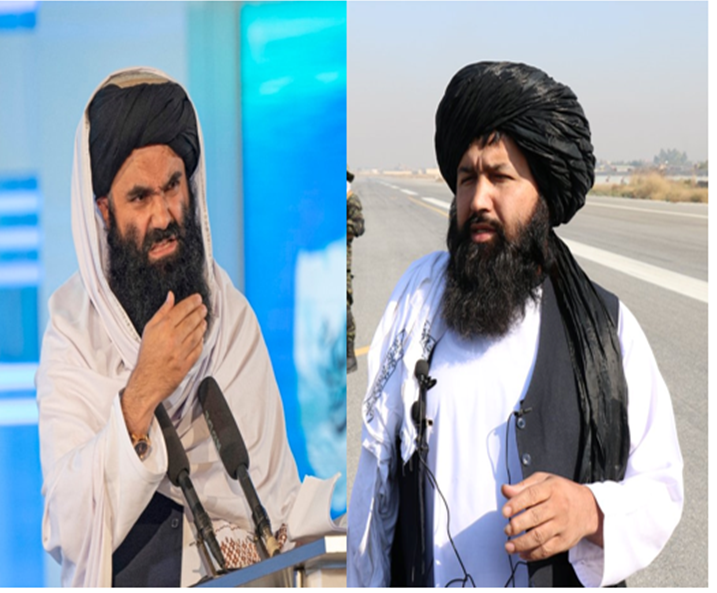RASC News Agency: A fresh rift has emerged within the Taliban’s ruling hierarchy, laying bare the group’s deepening divisions and its inability to project a coherent governing authority. The latest feud pits Sirajuddin Haqqani, the Taliban’s powerful Minister of Interior and head of the infamous Haqqani Network, against Mullah Neda Mohammad Nadim, the extremist Minister of Higher Education and a fierce loyalist of the Kandahar-based faction led by the reclusive supreme leader, Hibatullah Akhundzada.
According to multiple Taliban insiders, the tension between the two men long suppressed by the group’s rigid culture of secrecy has erupted into open hostility. The clash centers on a symbolic but telling dispute: which faction deserves to be called the “Conqueror of Kabul.”
During a recent gathering in the southeastern province of Paktika, Haqqani delivered a thinly veiled rebuke aimed at members of his own movement, criticizing those who, in his words, “played no part in the struggle for victory” yet now “parade as heroes and claim ownership of the conquest.” Without naming anyone, Haqqani complained that “some individuals, emboldened by arrogance, have begun assigning glory to themselves ignoring the blood and sacrifice that built this movement.”
Haqqani’s warning was stark: “Do not act in a way that this power is taken from you. Those who were stronger than you once fell from authority, and the same fate can visit you.”
Sources within the Taliban have confirmed that Haqqani’s remarks were directly aimed at Mullah Nadim, who has recently been touting himself as the “Conqueror of Kabul.” The title was once claimed by Haqqani himself, symbolizing his role in orchestrating the 2021 takeover of the Afghanistan’s capital. Nadim’s attempts to usurp the narrative have not only provoked Haqqani’s anger but also exposed the fierce rivalry between the Kandahar clerical bloc and the Haqqani military-intelligence network the two competing poles of Taliban power.
Nadim, a hardline ideologue with close ties to Akhundzada’s circle in Kandahar, has used his growing influence to curtail Haqqani’s authority in Kabul and within the Ministry of Interior. Taliban insiders report that key Haqqani loyalists in the capital have been systematically replaced by clerics loyal to Kandahar, effectively sidelining the Haqqani faction from decision-making over security and intelligence matters.
Haqqani, known for his pragmatic tone in limited public appearances, has in recent months found himself increasingly isolated. His past attempts to present a softer, internationally palatable image of the Taliban have been met with deep suspicion from Kandahar, where Akhundzada and his council of clerics view him as overly ambitious and dangerously autonomous.
The public clash between Haqqani and Nadim comes at a volatile time for the Taliban regime, which faces growing discontent both domestically and across its ranks. The group’s violent border confrontations with Pakistan its erstwhile patron have further complicated its internal balance. The most recent skirmishes along the Spin Boldak frontier reportedly killed more than 200 Taliban fighters and 58 Pakistani soldiers. While some Taliban commanders demanded retribution, others, including members of the Kandahar circle, urged restraint revealing a widening strategic rift within the regime.
Haqqani has notably remained silent on the clashes, a silence that analysts interpret as both political caution and a reflection of his waning influence. Mullah Nadim, meanwhile, has exploited this vacuum to portray himself as the true custodian of the Taliban’s “Islamic victory,” leveraging propaganda networks under Kandahar’s control to strengthen his position.
Observers argue that the feud represents far more than a personal rivalry. It underscores the structural fragility of Taliban rule a regime increasingly defined by factional paranoia, tribal loyalties, and the absence of national legitimacy. “The Taliban is not a government in the true sense,” said a political analyst in Kabul. “It is a network of competing fiefdoms, where every warlord disguises ambition under the cloak of religion.”
Despite its attempts to project unity, the Taliban’s so-called Emirate remains fractured along regional and ideological lines. The Kandahar faction, dominated by aging clerics and tribal leaders, seeks absolute theological control, while the Haqqani Network, built on paramilitary discipline and cross-border intelligence ties, aims for dominance through coercion and fear.
This internal cold war, simmering beneath the surface since the group’s return to power in August 2021, now threatens to unravel what little cohesion remains within the Taliban hierarchy. As economic collapse deepens and international isolation tightens, the movement’s leaders appear increasingly consumed by infighting competing not to serve a nation, but to preserve personal empires built on coercion and deceit.
The dispute over who “conquered Kabul” may seem symbolic, but for the Taliban, it cuts to the core of their myth of victory. And as that myth fractures, so too does the illusion of their rule.






